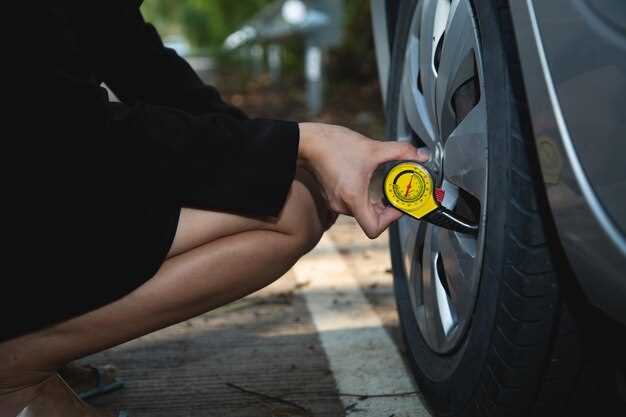
Experiencing a flat tire while on the road can be a frustrating and daunting situation. However, being prepared with a tire repair kit can make all the difference in how quickly you get back on your journey. These kits are essential tools designed to provide quick and effective solutions for tire-related issues, ensuring that even in the most inconvenient circumstances, you have the means to get the help you need.
The unpredictability of roadside emergencies can catch any driver off guard. A simple flat tire can lead to delays, stress, and potential safety hazards. With a reliable tire repair kit at your fingertips, you can tackle these challenges head-on. Understanding how to use the various components of a tire repair kit not only empowers you but also enhances your confidence in handling emergencies when they arise.
Moreover, knowing how to effectively use a tire repair kit can save you valuable time and money. Instead of waiting for roadside assistance, which can take hours, you can perform basic repairs yourself and continue your journey. Being self-sufficient during such emergencies not only alleviates stress but also ensures that you are not left stranded, waiting for help to arrive.
Identifying the Right Tire Repair Kit for Your Vehicle
Choosing the appropriate tire repair kit for your vehicle is essential for effective roadside assistance. It is crucial to consider the type of vehicle you own, as different vehicles may require specific tools and materials.
Start by evaluating the size of your tires. Most passenger vehicles will do well with a basic tire repair kit that includes tire plugs, a reamer, and a sealing compound. However, for larger vehicles like trucks or SUVs, it is advisable to opt for a more comprehensive kit that can address larger punctures.
Next, assess your typical driving conditions. If you often travel in remote areas, a kit with additional tools such as a portable air compressor can be invaluable. This will help you inflate the tire after the repair, ensuring that you can get back on the road without delay.
Additionally, consider the ease of use of the kit. A user-friendly repair kit can help you make immediate repairs without the need for professional help. Look for kits that include clear instructions or even instructional videos that guide you through the repair process.
Lastly, ensure that the kit is of high quality. Check customer reviews and product ratings to find kits that have proven reliable in actual roadside emergencies. A well-constructed repair kit can provide peace of mind, helping you feel prepared for unexpected tire issues during your travels.
Step-by-Step Guide to Using a Tire Repair Kit

Using a tire repair kit can help you quickly fix a flat tire and get back on the road. Follow these steps to effectively repair your tire.
Step 1: Identify the Damage
Before beginning the repair, check the tire for punctures or damage. Look for foreign objects, such as nails or screws, that may have caused the leak.
Step 2: Gather Your Tools
Locate your tire repair kit, which usually includes a tire reamer, insertion tool, rubber plugs, and a tire sealant. Make sure you have a compatible air pump or compressor ready as well.
Step 3: Prepare the Tire
Remove any debris from the punctured area. Clean the surface around the hole to ensure a tight seal when the repair is applied.
Step 4: Ream the Puncture
Using the tire reamer, insert it into the puncture and twist it gently. This will widen the hole, making it easier for the rubber plug to fit securely.
Step 5: Insert the Rubber Plug
Thread a rubber plug into the insertion tool, then push it into the reamed hole. Leave a small portion of the plug protruding from the tire surface to ensure it can form a proper seal.
Step 6: Secure the Seal
Pull the insertion tool out swiftly, leaving the rubber plug inside the tire. This action should create a tight seal between the tire and the plug.
Step 7: Inflate the Tire
Reattach your air pump or compressor and inflate the tire to the recommended pressure. Check for any leaks around the repair site while inflating.
Step 8: Test the Repair
After inflating, check to ensure that the tire holds air. If the tire remains inflated, you have successfully completed the repair.
Step 9: Drive Cautiously
Drive at a moderate speed after the repair, as a temporary fix may not be as reliable as a professional repair. Visit a mechanic as soon as possible to ensure the tire is safe for longer journeys.
By following these steps, you can effectively repair a tire while on the road, ensuring your safety and mobility during emergencies.
Important Safety Tips When Performing Tire Repairs on the Road

When you find yourself in a roadside emergency and need to perform tire repairs, safety should always be your top priority. Start by ensuring that your vehicle is parked on a flat, stable surface, away from traffic. This will help prevent accidents while you work on your tire.
Next, use hazard lights to alert other drivers of your situation. This simple step can significantly reduce the risk of collisions as you handle the tire repair. Use caution when exiting your vehicle, and be aware of your surroundings to avoid any potential dangers from passing cars.
Before beginning any tire repair, gather all necessary tools and a tire repair kit. Make sure you are wearing appropriate safety gear, such as gloves, to protect your hands from sharp objects and tire debris. Additionally, it is wise to have a flashlight if you are working in low light conditions.
When using a tire repair kit, follow the instructions carefully. Start by inspecting the tire for punctures or damage, and make sure to safely remove any debris. If you have to remove the tire, ensure that you are using a jack properly and that it is securely positioned to prevent the vehicle from tipping over.
Finally, once the repair is complete, it’s crucial to test your tire before driving away. Check the air pressure and ensure that the repair is secure. This will help ensure your safety as you navigate back onto the road.

